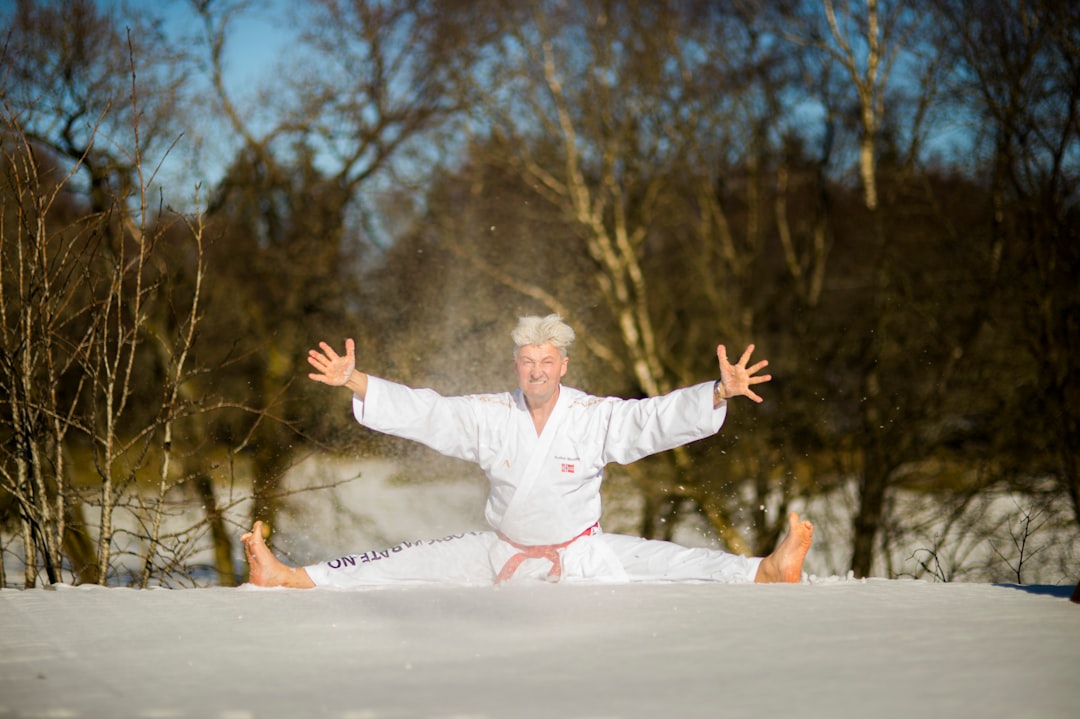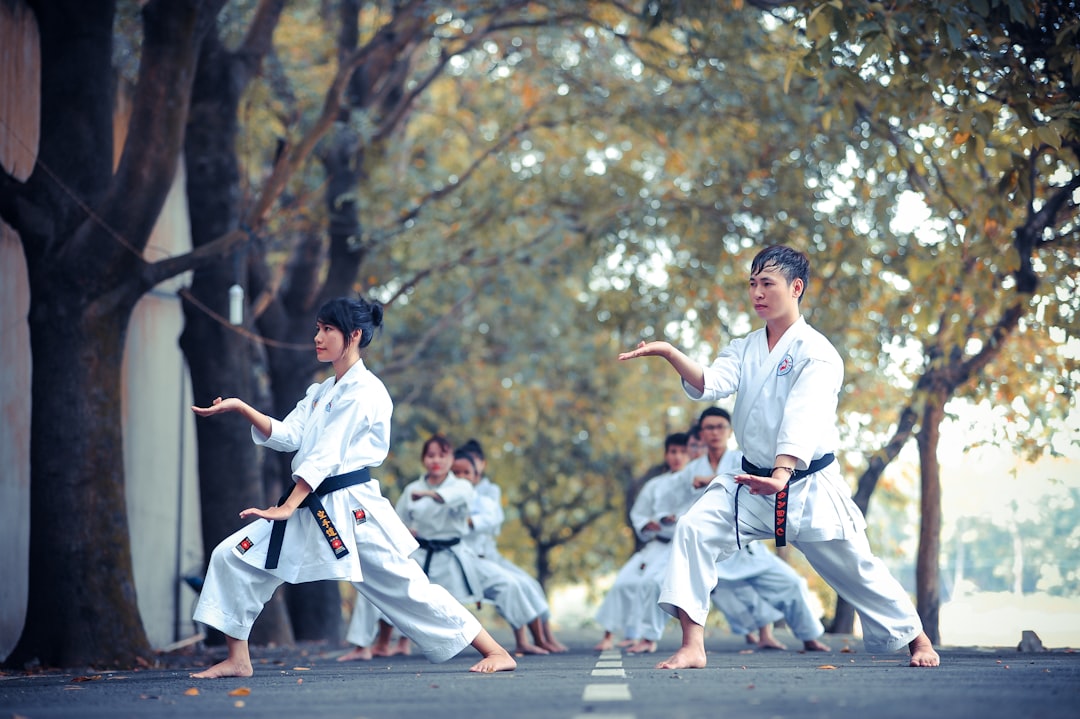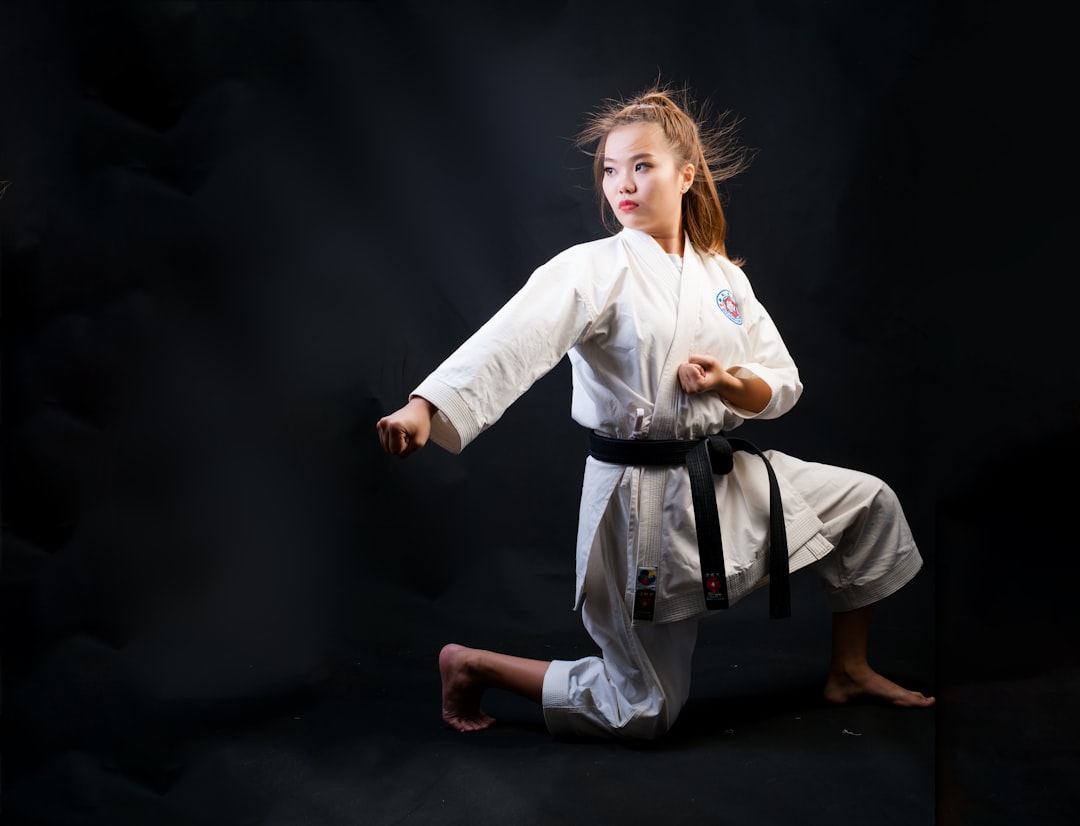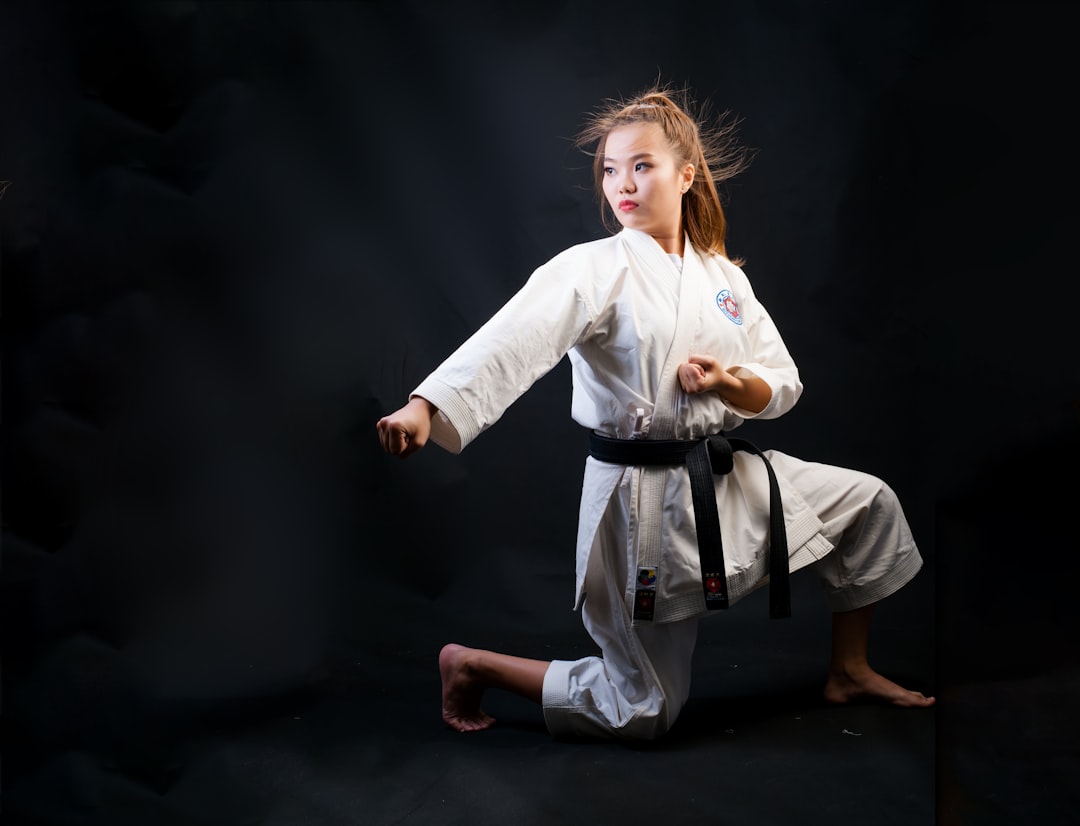The karate gi, or "keikogi," is a foundational element of karate practice, serving as both a practical uniform and a symbol of respect for the martial art. The traditional keikogi, consisting of a jacket (uwagi) and trousers (bajonami), is designed for optimal mobility, with variations across different schools to cater to specific needs while retaining its essence. The garment's white fabric embodies principles of purity and humility. Quality keikogis are made with durable materials like heavyweight cotton or a blend of cotton and polyester, offering both longevity and breathability. For karate practitioners, choosing the right keikogi involves considering comfort for movement, fit to prevent restriction or distraction, and durability to withstand intense training. A well-selected karate outfit should also perform well during grappling and sparring, with consistent fabric thickness ensuring even wear and shrinkage. Maintenance is key; a gi that remains in good condition after washing is a valuable investment. When selecting a keikogi, one should consider the brand's reputation, return policy, and the garment's ability to meet both training demands and personal preferences, all while respecting karate's rich heritage and its commitment to tradition.
When stepping into a dojo, one immediately becomes aware of the uniformity not just in practice but also in attire. A karate suit, often referred to as a “Karate Gi,” is more than a garb; it’s a symbol of discipline and respect within the martial arts community. This article delves into the significance of this traditional outfit, exploring its evolution from ancient roots to its modern form. We will uncover the key characteristics that define an authentic Karate Gi and offer guidance on selecting your own, suitable for both beginners and seasoned practitioners. Join us as we shed light on what you call a karate suit and its role in the martial arts journey.
- Unveiling the Essentials: Understanding the Karate Gi
- The Evolution of the Karate Uniform: From Tradition to Modern Training
- Key Characteristics of a Classic Karate Outfit
- Selecting Your Own Karate Suit: Tips and Considerations for Beginners and Experienced Practitioners Alike
Unveiling the Essentials: Understanding the Karate Gi

When delving into the realm of martial arts, one term that often surfaces is “karate gi.” This traditional garment is synonymous with the discipline and serves as a cornerstone in the identity of karate practitioners. The karate outfit, known as the gi, is a two-piece ensemble consisting of a jacket and trousers, typically made of cotton or hemp for durability and comfort during rigorous training sessions. Does the term “karate uniform” ring a bell? It’s indeed another way to refer to the gi. The gi not only provides a standardized appearance among karateka but also emphasizes the importance of respect and discipline within the practice. What do martial artists wear in karate? They don the karate gi, which is both functional and symbolic, reflecting the values of strength, humility, and unity that karate embodies. The garment’s design facilitates ease of movement, allowing practitioners to execute techniques with a full range of motion while also withstanding the wear and tear of daily training. Is the gi the same across all styles of karate? While there are variations, such as the Shotokan gi being typically longer than other styles, the fundamental design remains consistent across different karate disciplines. This consistency underscores the universal respect for the art form and its traditions.
The Evolution of the Karate Uniform: From Tradition to Modern Training

Karate, a discipline rooted in Okinawan culture, has a rich history that is mirrored in the evolution of its traditional outfit, commonly referred to as a “gi” or “keikogi.” Initially, practitioners wore simple cotton kimonos for training, which were functional yet not specifically designed for the demands of karate. Over time, the need for a more practical and uniform garment led to the development of the modern karate gi. Today, this garment has become an iconic symbol of the sport, distinguishing it from other martial arts. What is the term for a karate suit? The answer lies in the Japanese terminology; the karate outfit is called a “keikogi.” This garment typically consists of a jacket and trousers, both made of cotton or hemp fabric, with a belt, or “obi,” to hold them closed.
The modern keikogi has undergone several modifications to suit the needs of contemporary karate practitioners. The traditional kimono sleeves have been shortened to allow for greater range of motion in the arms, and the trousers have been tailored to provide mobility and comfort during sparring and training. Additionally, the thickness and weight of the fabric have been standardized to ensure consistency across different brands and manufacturers. The keikogi has also become more standardized in terms of sizing and fit to accommodate the diverse body types of karateka worldwide. What changes have been made to the traditional karate outfit to adapt it for modern training? The modifications are aimed at enhancing functionality, durability, and comfort while maintaining the tradition and aesthetic associated with karate practice.
Key Characteristics of a Classic Karate Outfit

When discussing the attire quintessential to the practice of karate, one is often referring to what is traditionally known as a “keikogi” or karate uniform. This garment is a cornerstone in any practitioner’s routine, designed to facilitate the fluidity and range of motion required for effective execution of techniques. A classic keikogi typically features a jacket, known as “uwagi,” which is longer than those found in judo or kendo outfits, extending down to just above the knee, allowing for full mobility during practice. The trousers, called “bajonami,” are straight-legged and fasten with ties at the sides, offering a comfortable fit that does not restrict movement. The fabric of a keikogi is usually white, symbolizing purity and humility, which are values inherent to the martial arts philosophy. Does the keikogi vary in design across different karate styles or schools? Yes, it does. While the basic principles remain consistent, certain styles may have their own slight variations in cut or detailing to suit the specific needs of their practitioners. The jacket may differ in its lapel style or the trousers might have a different fit, but the essence of the keikogi as a karate outfit name remains the same across various disciplines within the martial art.
The keikogi is also characterized by its robust construction, designed to withstand the rigors of regular training. It typically features reinforced stress points and is made from heavyweight cotton or a cotton-polyester blend for both durability and breathability. The outfit’s simplicity not only reflects the minimalist approach of karate but also ensures that there are no unnecessary distractions during practice or competition. Are there any specific color variations or additional details that might be found in a high-quality keikogi? While the traditional white is most common, some high-quality keikogis may come in different colors for aesthetic reasons or to represent a particular dojo’s identity. Additionally, they may have subtle yet functional details such as embroidery, belt loops designed to accommodate obi (belt) ties securely, and carefully considered cuts that offer both performance and appearance without compromising the martial art’s traditional values.
Selecting Your Own Karate Suit: Tips and Considerations for Beginners and Experienced Practitioners Alike

When selecting a karate suit, also known as a karate gi, it’s crucial to consider both comfort and durability. For beginners stepping onto the mat for the first time, the choice of a karate outfit can seem daunting. Is the gi you’re considering suitable for the rigors of training? A high-quality karate suit, such as one made from heavy cotton or a durable poly-cotton blend, will not only withstand the demands of regular practice but also provide the freedom of movement necessary for proper technique execution. The fit of the gi is also paramount; it should neither be too tight nor too loose. Does the jacket and pants allow for a full range of motion without feeling restrictive? Ensure the sleeves are long enough to stay on during techniques like grabbing or throwing, and the pants should remain in place during active training. For experienced practitioners, the considerations may extend to the weight and weave of the fabric, as these factors can influence the grip and performance during sparring or grappling components of karate training. Is the thickness consistent throughout the garment for uniform shrinkage and wear? Additionally, consider the care and maintenance of the gi. A suit that retains its shape and color after washing will be a more economical choice in the long run. Always opt for a brand that offers a reputable return policy, ensuring your investment is protected should the gi not meet your needs. By carefully evaluating these factors, both beginners and seasoned karateka can select a karate outfit that aligns with their training goals and preferences.
In wrapping up our exploration of the martial art’s attire, it’s clear that the karate suit, or more precisely termed, ‘keikogi,’ holds a significant place in the discipline. Its origins steeped in tradition, the keikogi has evolved to become a practical training garment for practitioners worldwide. This article delved into the essential characteristics that define this foundational piece of a karateka’s ensemble and offered guidance on selecting the right suit for both beginners and seasoned martial artists. Whether referred to as a karate gi or keikogi, understanding its function and design is key to appreciating the rich history and present-day utility of this garment in the practice of karate.
